Many birds have interesting structures on top of their heads. These are classified into three main types: crests, casques, and combs. Read on to find out what each is made of, what birds have them, and what they use them for. Then find out what bird has a unique head ornament that does not fit into any of these categories!
What Are Bird Crests?
A crest, sometimes also called a crown, is a group of semiplume feathers. These feathers sit on top of the head and may extend down the neck and upper back. Some birds can raise and lower these crests at will. Depending on the species, birds may use their crests for display, mate attraction, communication, and defense.
There are many different kinds of birds with crests. Some well-known examples include:
Cockatoos (Family Cacatuidae)
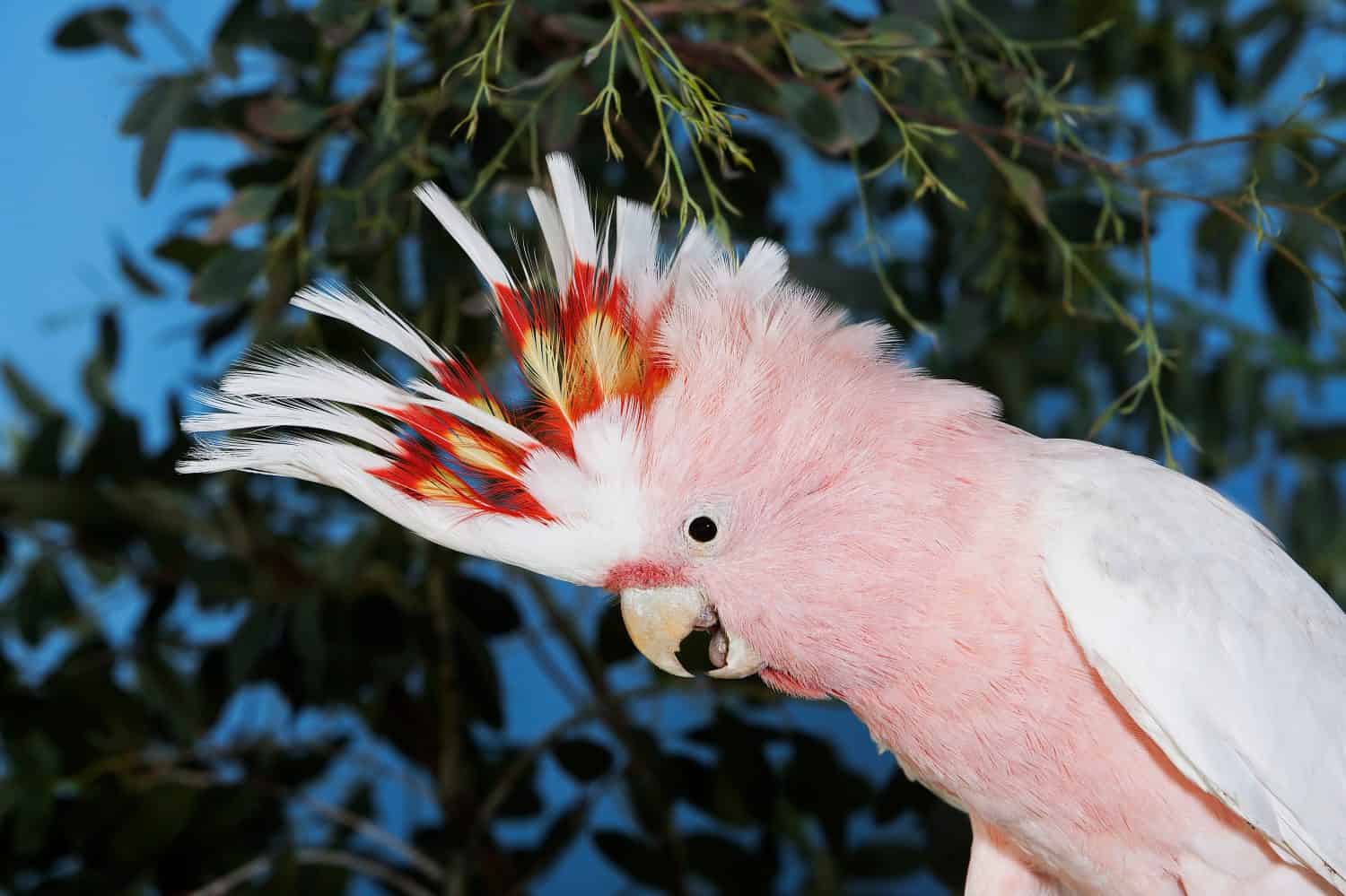
Cockatoos are mostly found in Australasia, along with parts of Indonesia and the Philippines.
©slowmotiongli/Shutterstock.com
Crowned Cranes (Balearica spp.)
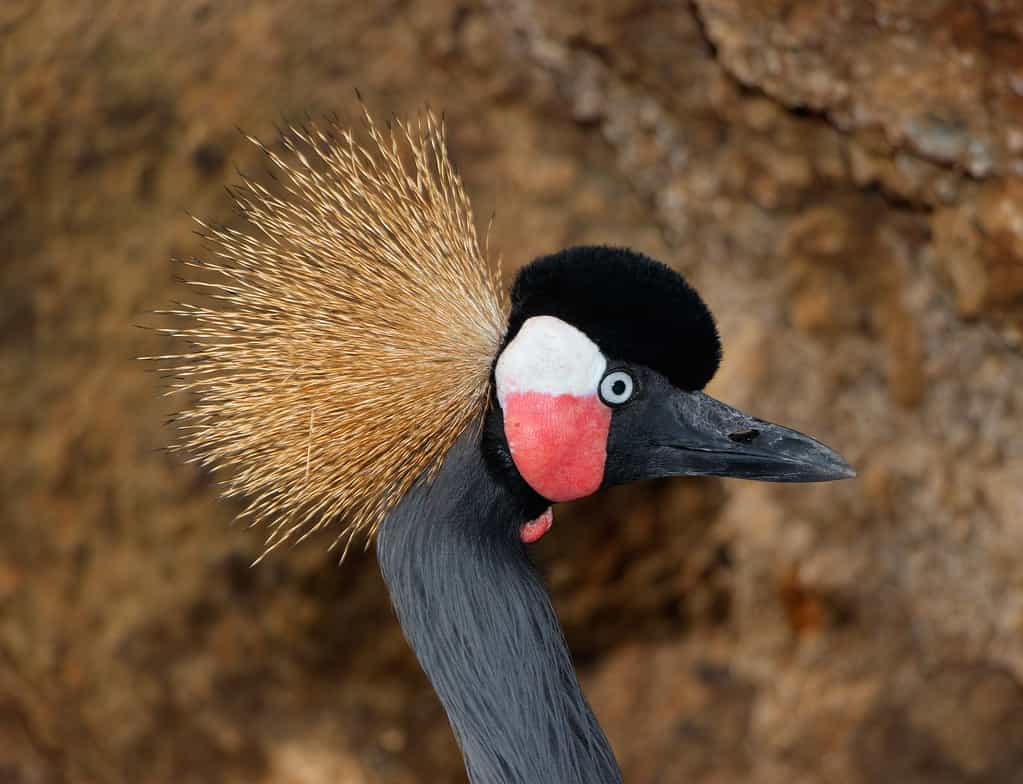
Both species of crowned cranes are native to
Africa
.
©H. Zell / CC BY-SA 3.0 – License
Crowned Pigeons (Goura spp.)

All four species of crowned pigeons are endemic to New Guinea and surrounding islands.
©Breaking The Walls/Shutterstock.com
Royal Flycatchers (Onychorhynchus spp.)

Royal flycatchers are native to the Neotropical Americas.
©Tiny Turkey/Shutterstock.com
Turacos (Family Musophagidae)

Turacos are a family of frugivorous birds native to Africa.
©slowmotiongli/Shutterstock.com
What Are Bird Casques?
A casque, sometimes also called a helmet or horn, is a bony projection of the skull or upper mandible covered with a layer of cornified skin. In cassowaries (see below), the casque covers a foamy collagen layer over the bone. Depending on the species, casques may serve a variety of purposes, including as a visual symbol of sex, age, and/or social status; beak reinforcement; thermoregulation; a resonance chamber to enhance calls; and combat.
Casques are found in six different kinds of birds:
Cassowaries (Casuarius spp.)
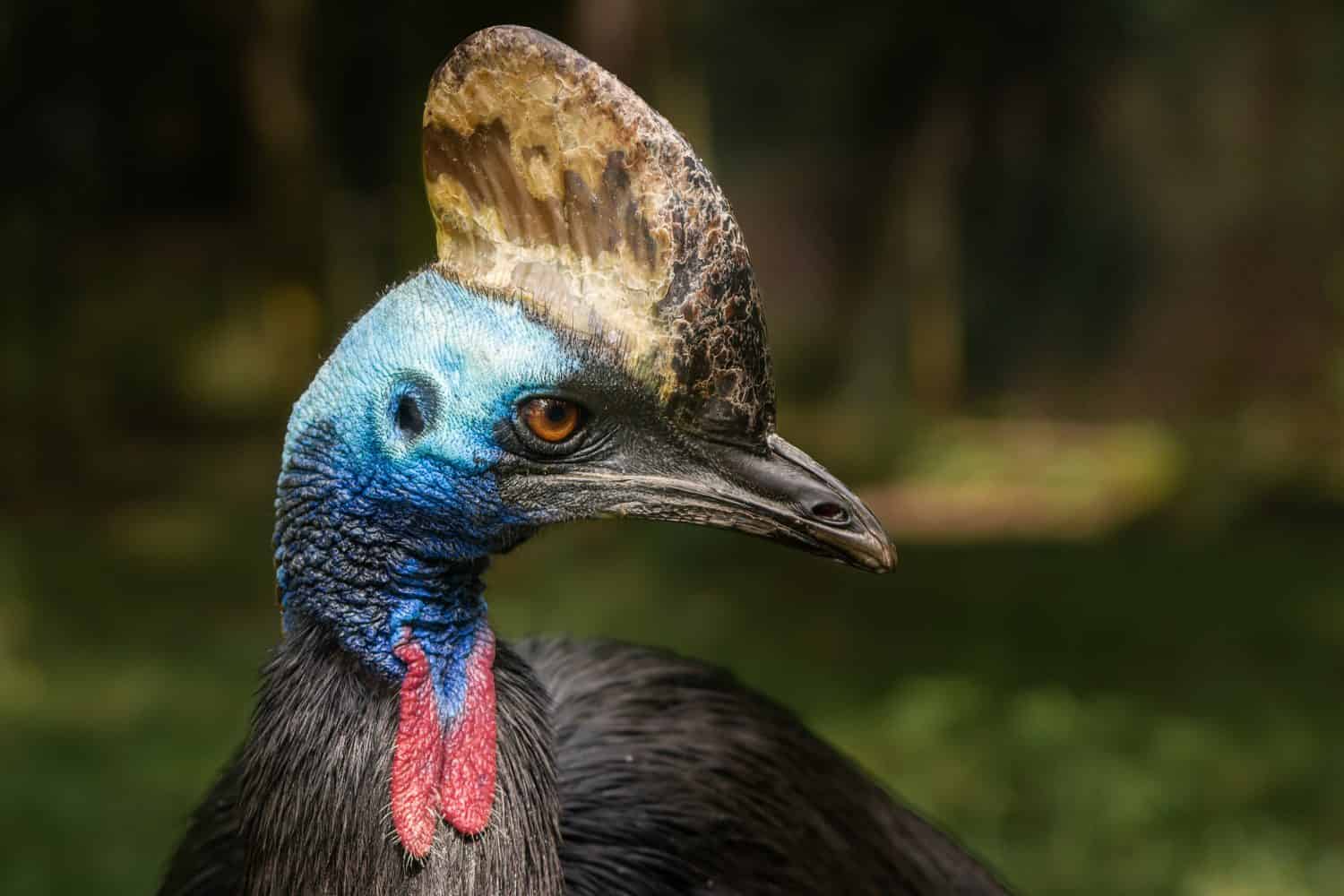
All three species of cassowaries are flightless and endemic to tropical forests of Australasia.
©Honza123/Shutterstock.com
Helmeted Curassows (Pauxi spp.)
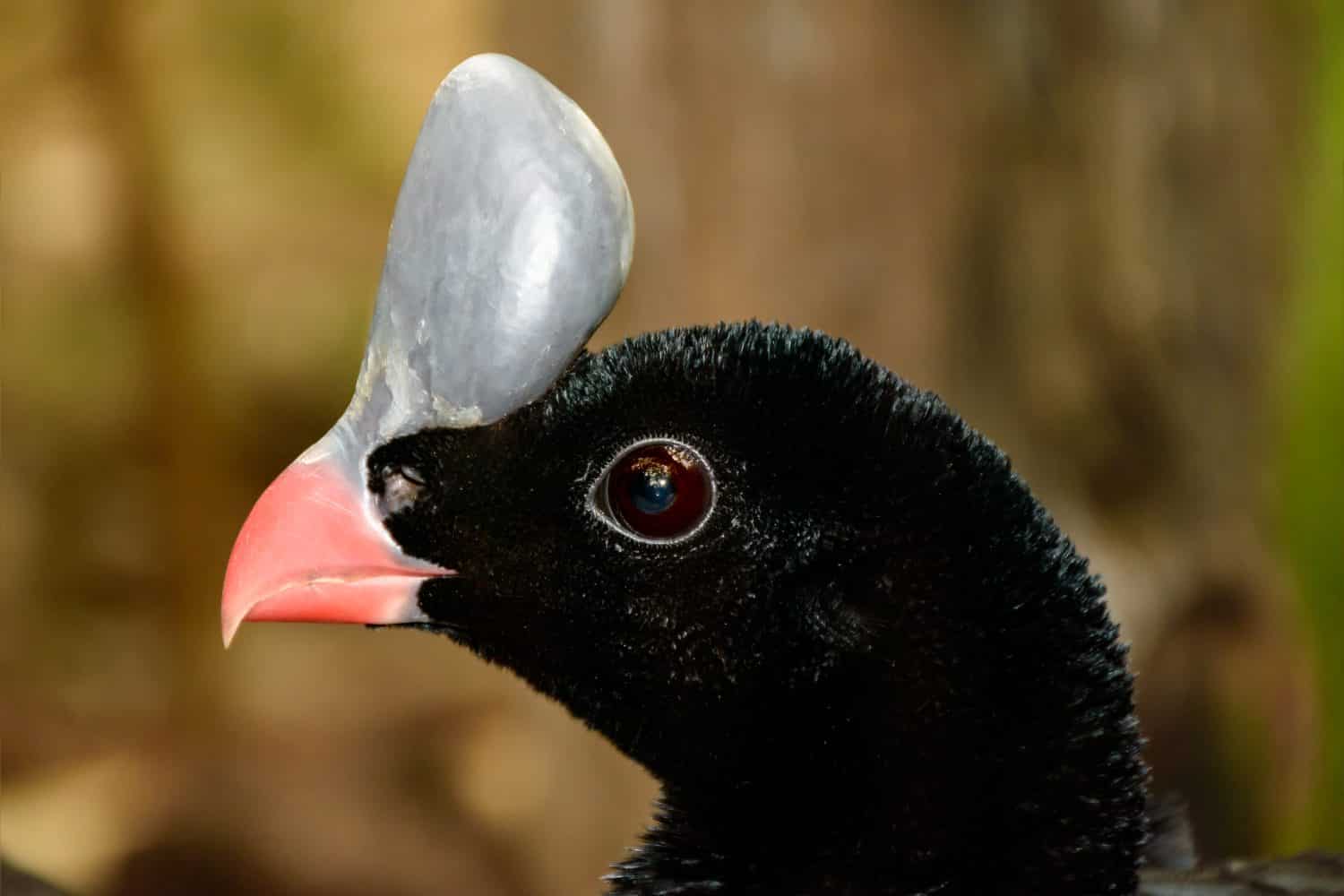
All three species of helmeted curassows are native to South America.
©Jeff W. Jarrett/Shutterstock.com
Helmeted Guineafowl (Numida meleagris)

The helmeted guineafowl is native to Africa but has been widely introduced as a domesticated species to other parts of the world.
©Photography Phor Phun/Shutterstock.com
Hornbills (Family Bucerotidae)

Hornbills are a large family of birds that range across parts of Sub-Sahara Africa, Arabia, the Indian Subcontinent, Southeast Asia, and Oceania.
©Jamil Bin Mat Isa/Shutterstock.com
Horned Guan (Oreophasis derbianus)
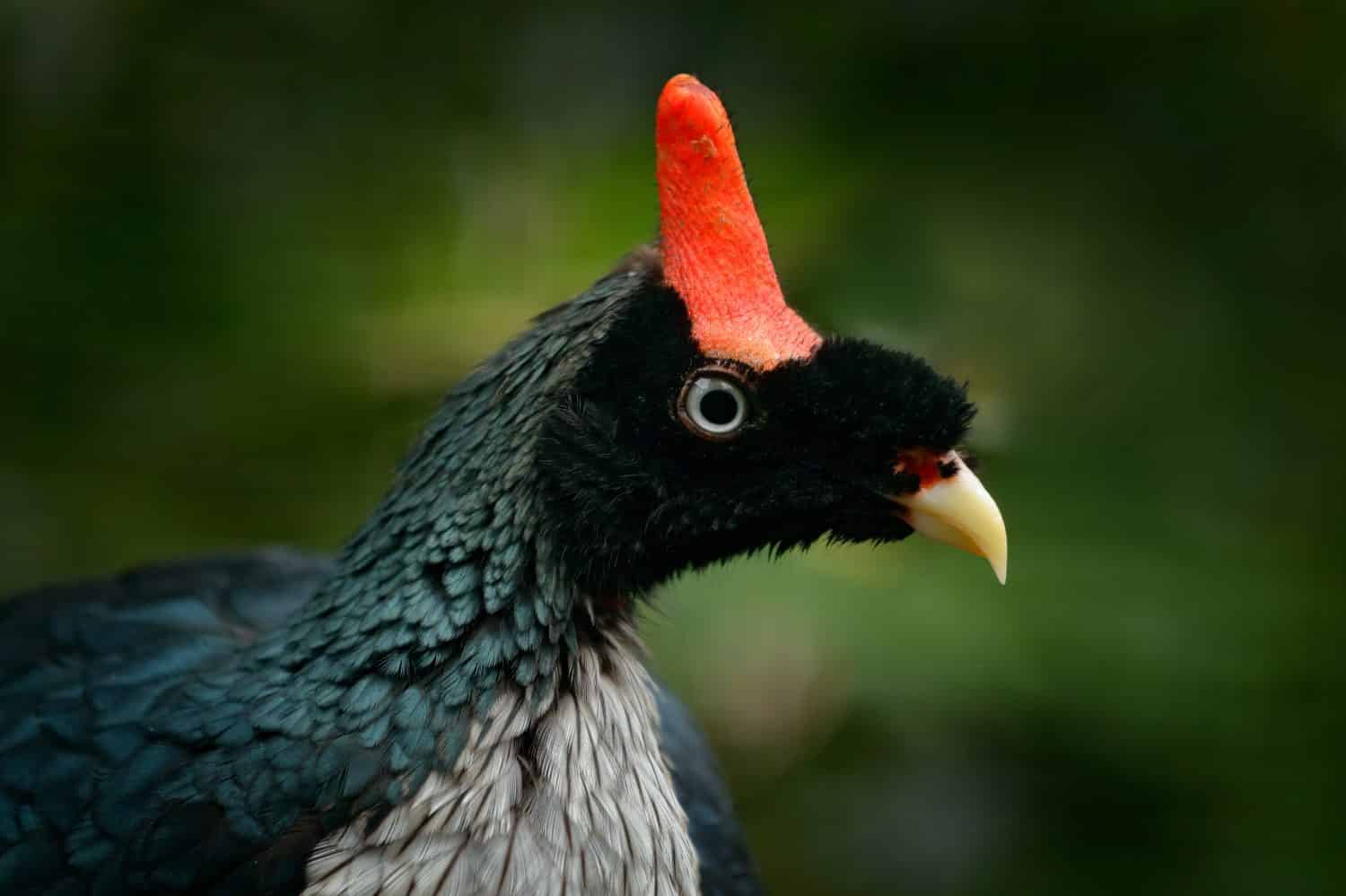
The horned guan is native to montane forests in southeastern Mexico and Guatemala.
©Ondrej Prosicky/Shutterstock.com
Maleo (Macrocephalon maleo)
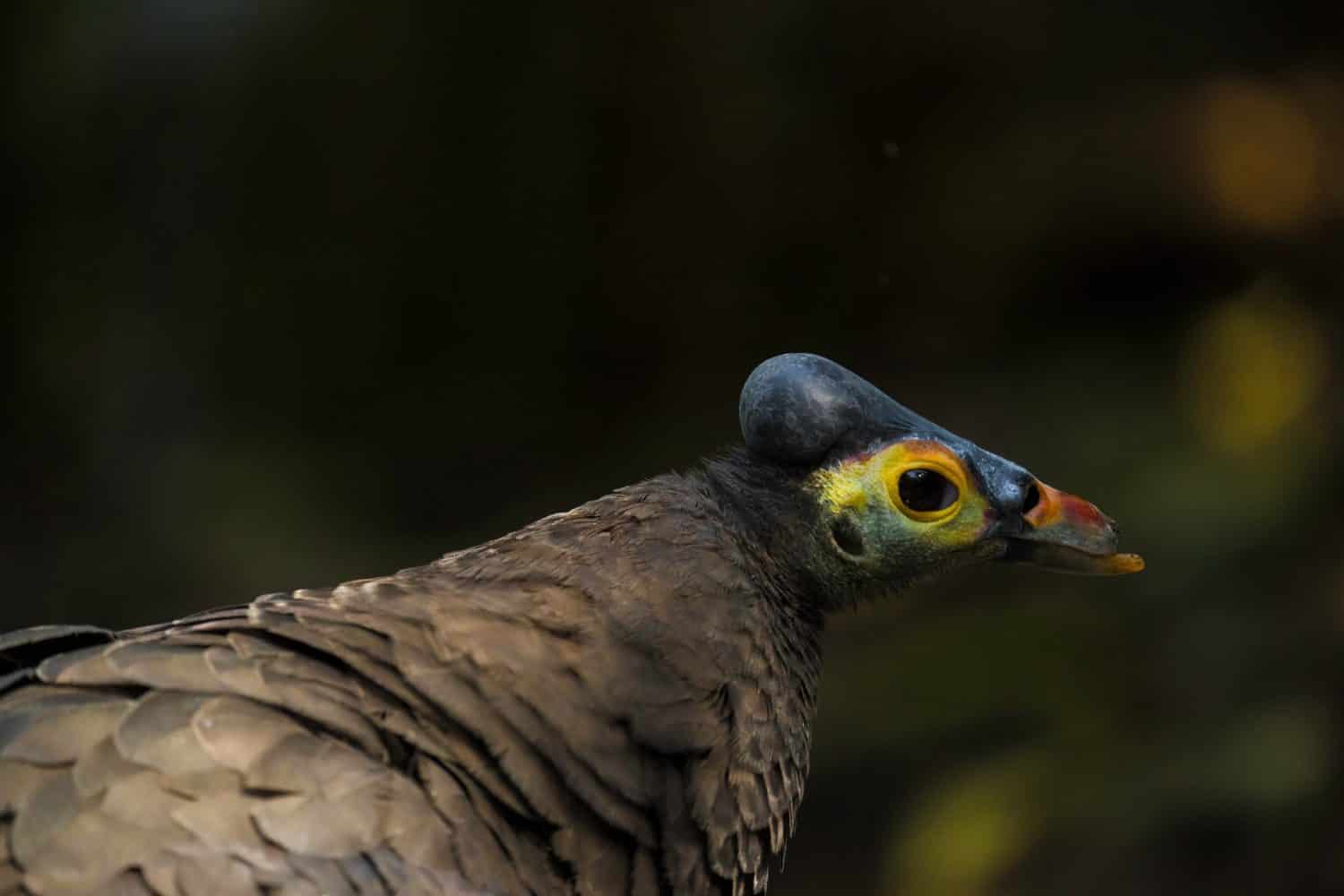
The maleo is endemic to the Indonesian islands of Sulawesi and Buton.
©GypsyPictureShow/Shutterstock.com
What Are Bird Combs?
A comb, sometimes also called a cockscomb, is a fleshy growth on top of the head. Only gallinaceous birds have combs, and the feature is usually larger in males (cocks or roosters) than in females (hens). Similar fleshy growths such as wattles, snoods, beards, and earlobes are collectively called caruncles. These brightly colored parts can be indicators of health and vigor and used to attract mates.
Combs are found in:
Wild Junglefowl (Gallus spp.)
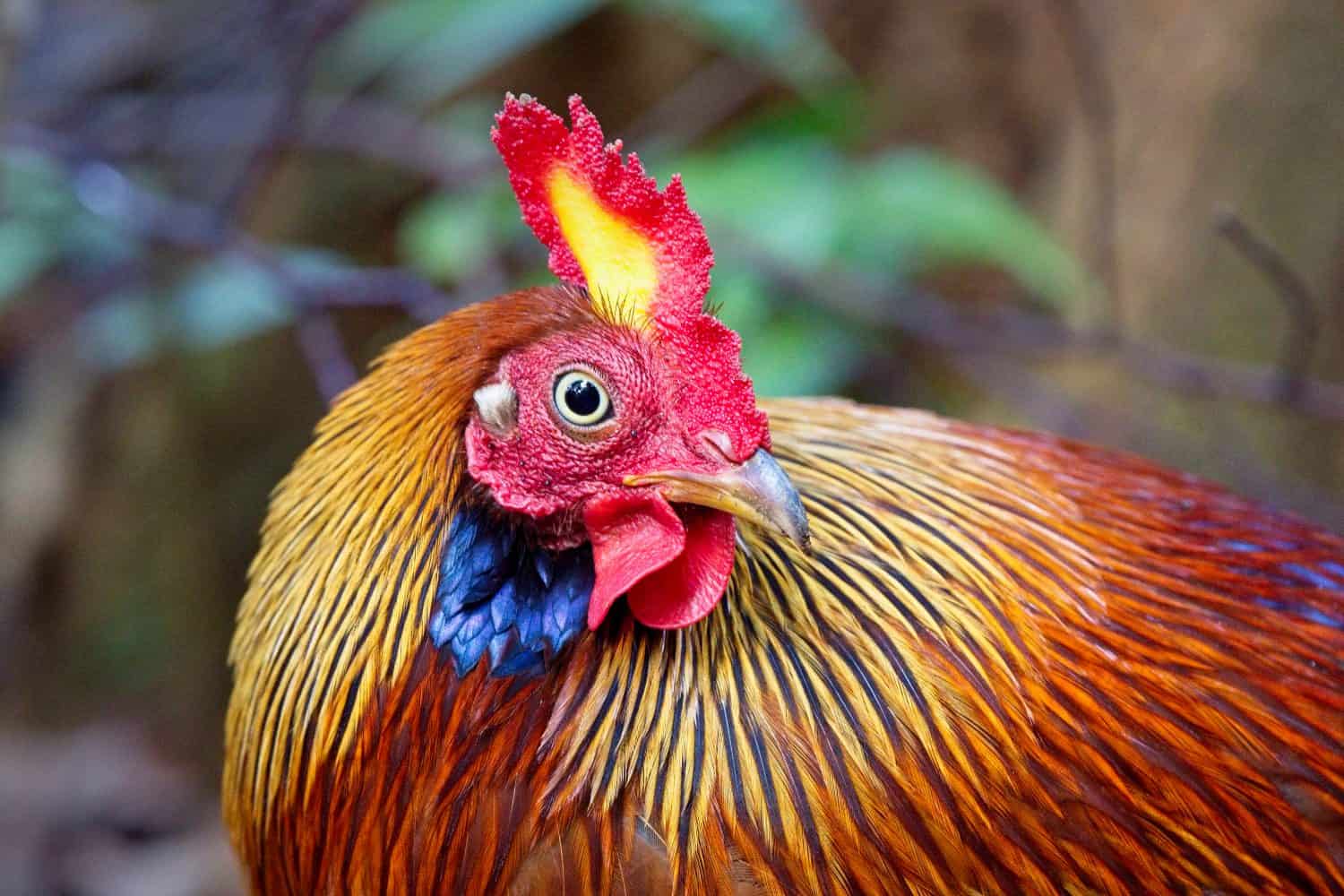
Junglefowl are native to parts of South and Southeast Asia.
©tony mills/Shutterstock.com
Domestic Chickens (Gallus domesticus breeds)

Domesticated chicken breeds derive from wild junglefowl.
©Wizard Goodvin/Shutterstock.com
What Is on the Head of a Horned Screamer?
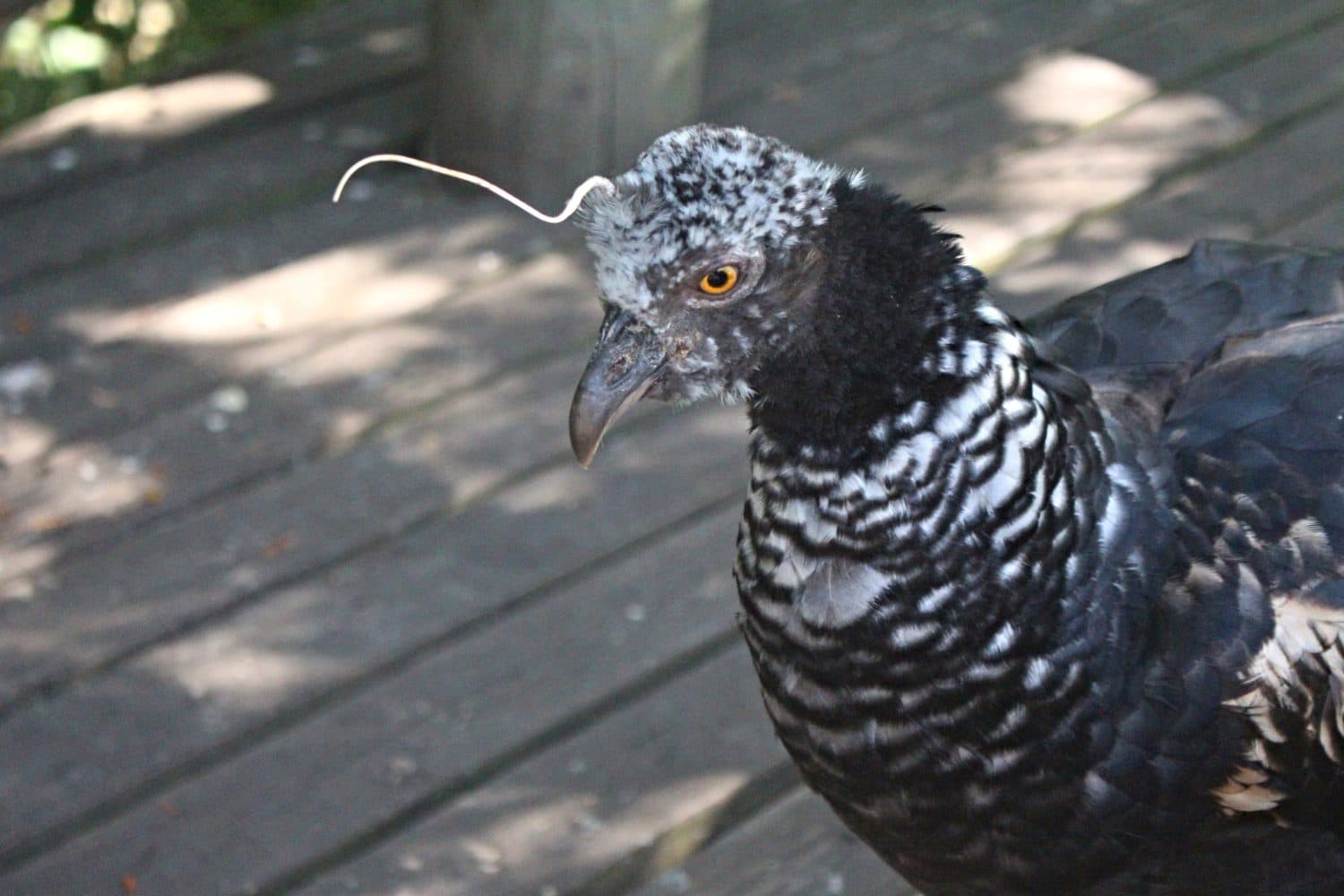
Horned screamers are native to wetlands of northern South America and are sometimes called the unicorns of the bird world.
©Nessa_Perez/Shutterstock.com
Both male and female horned screamers (Anhima cornuta) have a head ornament that is neither a crest, casque, or comb. It is also not derived from a feather. Rather, the “horn” on its head is actually a cornified spine. This structure is unique in the bird world! This spine grows continuously but usually doesn’t grow longer than 6 in (15 cm) before breaking off at the tip. Since it is not firmly attached to the skull, it also sways whenever the bird shakes its head. Scientists still are not sure what purpose it serves!
Summary of Crests, Casques, and Combs: Differences and Examples
| Head Structure Type | Composition | Possible Uses | Birds With This Feature |
|---|---|---|---|
| crest (aka crown) | group of semiplume feathers | display, mate attraction, communication, defense | found in many birds; examples include cockatoos, crowned pigeons, crowned cranes, royal flycatchers, turacos |
| casque (aka helmet or horn) | bony projection over upper mandible or skull covered with cornified skin | visual symbol of sex, age, and/or social status; beak reinforcement; thermoregulation; resonance chamber to enhance calls; combat | cassowaries, hornbills, helmeted curassows, helmeted guineafowl, horned guan, maleo |
| comb (aka cockscomb) | fleshy growth | indicator of health & vigor; mate attraction | wild junglefowl and domestic chickens |
| spine (aka horn) | cornified spinelike structure | unknown | unique to the horned screamer |
The photo featured at the top of this post is © Kuttelvaserova Stuchelova/Shutterstock.com
Thank you for reading! Have some feedback for us? Contact the AZ Animals editorial team.






